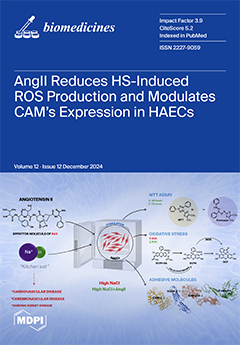Background: Although genetic testing has improved our ability to diagnose Lynch syndrome (LS), there is still limited information on the extent of variations in the clinical and genetic landscape among LS variant heterozygotes (LSVH) in Africa. We sought to investigate the cancer spectrum, cumulative risk, and survival outcomes of LSVH with pathogenic/likely pathogenic variants (P/LPVs) in the
MLH1 and
MSH2 genes using a LS registry in South Africa over the last 30 years.
Methods: A retrospective study was conducted to retrieve demographic, clinical, and genetic data of all LSVH with P/LPVs in the
MLH1 and
MSH2 genes from our LS registry. Genetic data were analyzed according to cancer spectrum, cumulative risk, and crude survival. We used the Chi-squared and
t-test to assess differences between groups, and Kaplan–Meier survival analyses were used to analyze the cumulative risk and crude survival outcomes. A
p-value < 0.05 at a 95% confidence interval was considered statistically significant.
Results: We analyzed a total of 577 LSVH from 109 families. About 450 (78%) and 127 (22%) LSVH harbored a disease-causing mutation in
MLH1 and
MSH2, respectively. A South African founder PV (
MLH1:c.1528C>T) accounted for 74% (n = 426) of all LSVH. CRC was the most common diagnosed cancer in both
MLH1 and
MSH2 LSVH.
MLH1 LSVH had a younger age at cancer diagnosis than
MSH2 LSVH (43 vs. 47 years, respectively,
p = 0.015). Extracolonic cancers were predominantly higher in female LSVH (n = 33, 35%) than in male LSVH (n = 8, 7%) with the
MLH1:c.1528C>T founder PV. The cumulative risk of any cancer and CRC at any age was higher in
MLH1 LSVH than in
MSH2 LSVH (
p = 0.020 and
p = 0.036, respectively). LSVH with the
MLH1:c.1528C>T PV had a better 10-year overall survival after the first cancer diagnosis, particularly for CRC.
Conclusions: LSVH with P/LPVs in the
MLH1 and
MSH2 genes exhibited significant gene- and sex-specific differences in cancer spectrum, cumulative risk and survival outcomes. Cancer risk and survival estimates described in this study can be used to guide surveillance and genetic counselling for LSVH in our population.
Full article






